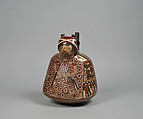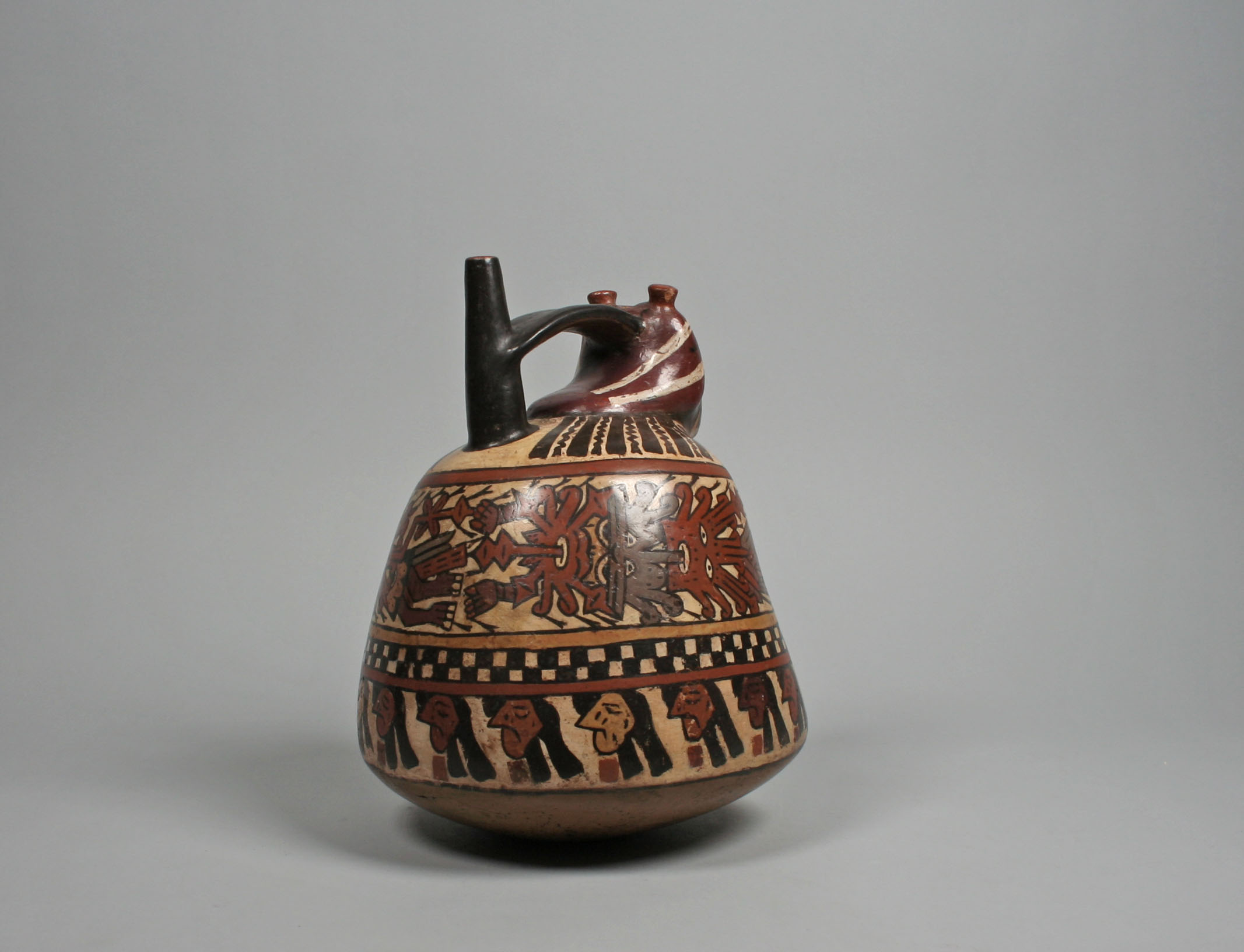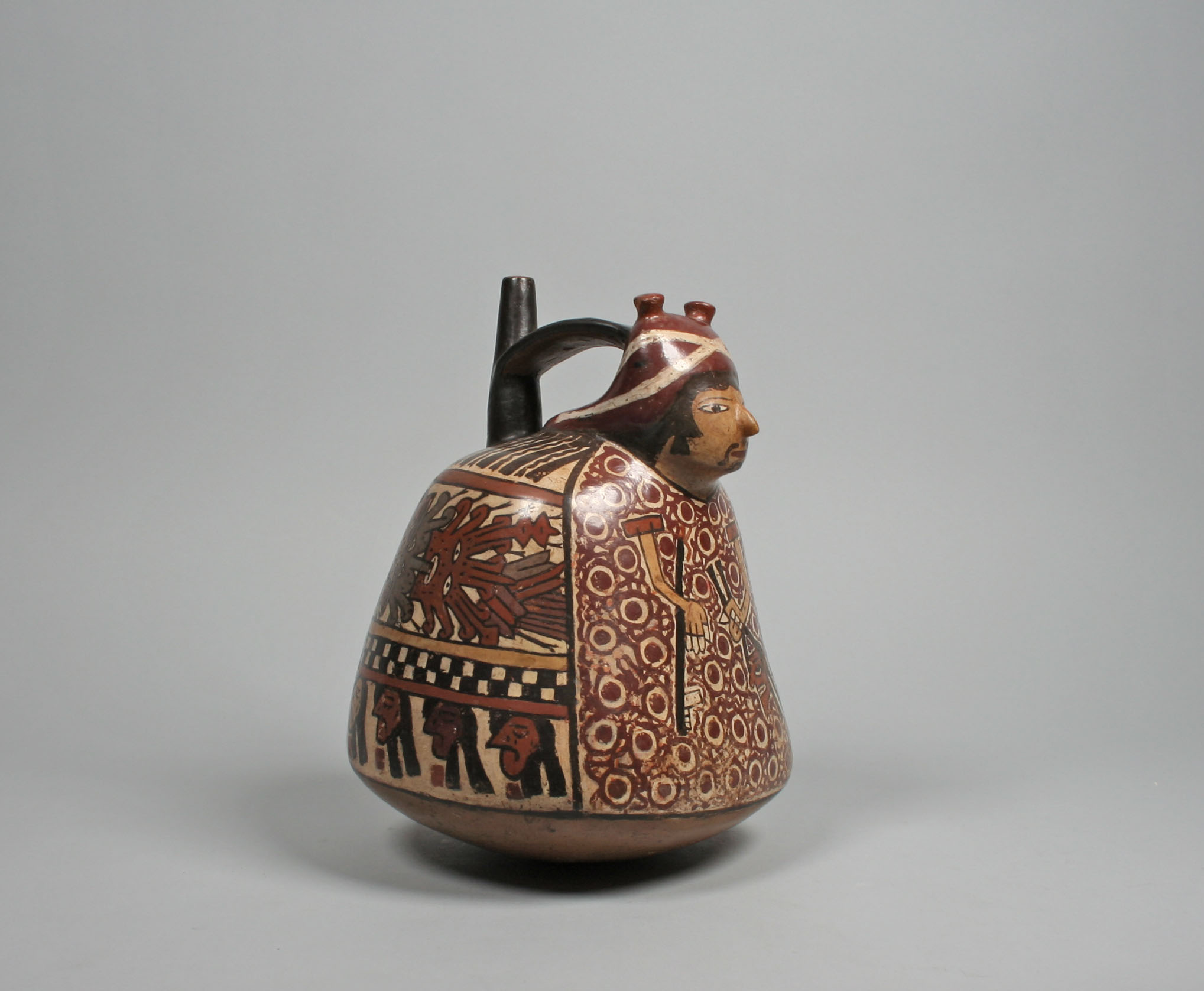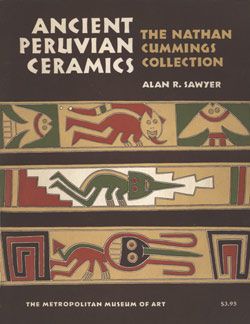Spout-and-bridge bottle with warrior
This bottle was crafted in the Nasca style, the dominant artistic tradition of the South Coast of Peru between 1 and 600 CE. Modeled and painted to represent an elaborately dressed male figure, he holds a staff in one hand and a severed head in the other, suggesting he is a warrior.
The figure wears a hat with white bands crossing the forehead while locks of long hair rest on his shoulders. The simplicity of the headdress contrasts with his rich garments. His shirt is covered with circular designs, perhaps indicating ornaments attached to the fabric (see, for example, MMA 1979.206.754-.762). Over the shirt he wears a mantle that covers his shoulders and back.
The mantle’s central motif is a figure that seems to be floating or flying—its feet and arms are aligned horizontally—and his face is covered by mouth and head ornaments with tendril-like appendices. Only the eyes and mouth are distinguishable under this heavy ornamentation. Below the figure, a checkboard design and a series of disembodied heads complete the composition.
In many ways, the Nasca style is a continuation of the earlier Paracas style, but Nasca artists distinguished their work through the use of colorful slips, watery mixtures of clay and pigments, applied before firing, thereby permanently fixing the color to the ceramic surface. A delicate sheen was achieved by burnishing the surface with a stone polisher or similar implement before firing, while the ceramic surface was still relatively moist. Such fine polychrome ceramics were used in ceremonies attended by hundreds of people, who transported these vessels back home as prestige items and as carriers of religious knowledge.
Hugo C. Ikehara-Tsukayama, Senior Research Associate, Arts of the Ancient Americas, 2023
References and Further Reading
Ikehara-Tsukayama Hugo C., Dawn Kriss, and Joanne Pillsbury. “Containing the Divine: Ancient Peruvian Pots.” The Metropolitan Museum of Art Bulletin Vol. 80, Number 4 (Spring 2023). “Containing the Divine: Ancient Peruvian Pots.” Metropolitan Museum of Art Bulletin vol. 80, no 4 (Spring 2023).
Pardo, Cecilia, and Peter Fux. Nasca. Lima: Museo de Arte Lima, 2017.
Proulx, Donald A. “Paracas and Nasca: Regional Cultures on the South Coast of Peru” in The Handbook of South American Archaeology, edited by H. Silverman and W. H. Isbell, pp. 563-585. New York: Springer Science+Business Media, LLC.
Vaughn, Kevin J. "Craft and the Materialization of Chiefly Power in Nasca," in Foundations of Power in the Prehispanic Andes, edited by Kevin J. Vaughn, Dennis Ogburn, and Christina A. Conlee. Archaeological Papers of the American Anthropological Association, No. 14, pp. 113-30. American Anthropological Association, 2005.
This image cannot be enlarged, viewed at full screen, or downloaded.
This artwork is meant to be viewed from right to left. Scroll left to view more.





